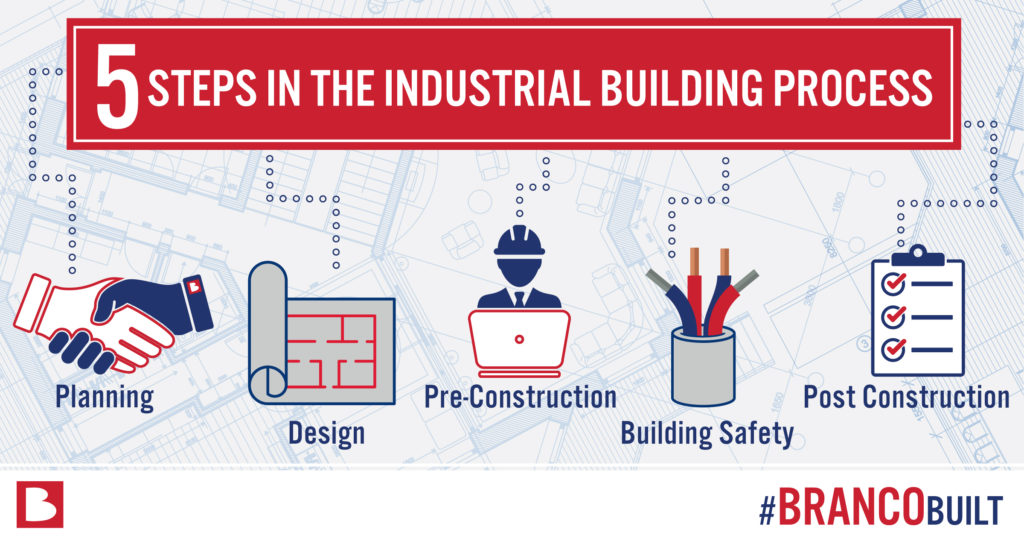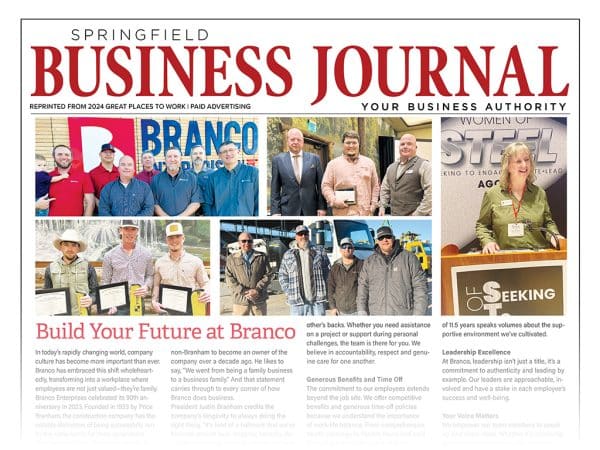There are three commonly recognized sectors of the construction industry: residential, commercial, and infrastructure. While that may seem relatively simple on the surface, the reality is that each includes an intricate subset of categories that require different rules, regulations, and planning needs.
For example, within the commercial sector alone, there are four main subcategories: industrial, retail, office, and multifamily. Today, we take a deep dive into the complex and ever-growing world of industrial building to ensure you are equipped with the information needed for a successful project.
What is an Industrial Building?
First things first, what exactly is an industrial building? Like we mentioned, an industrial building is one of the four main types of commercial properties used for business purposes. Simply put, industrial buildings are factories or other large premises primarily used for manufacturing or storing raw materials, goods, or services for economic purposes.
The origins of industrial buildings in the United States dates back to 1790 when Samuel Slater opened the first American textile mill, which is often considered the start of the American Industrial Revolution. Ultimately, Slater demonstrated the financial benefits of using these structures to dramatically increase the production of goods. Fast forward to today, industrial buildings have completely transformed the American way of life—with a market size of approximately $32 billion.
However, the term “industrial building” is quite broad. Let’s dive into the nine leading types.
Types of Industrial Buildings
-
Warehouse and Distribution
Used for the storage and transportation of goods, these typical single-story buildings range anywhere from 5,000 square feet to hundreds of thousands. Due to the necessary racking and storage systems housed under its roof, ceilings are generally at least 60 feet high. Additional defining features include loading docks, large truck doors, and parking lots to accommodate the semi-trailers used for distribution.
-
Manufacturing
Also known as heavy industrial buildings, these manufacturing facilities consist of the capital-intensive equipment required for the production of goods and materials. Examples are the oil, mining, and shipbuilding businesses. These buildings include a three-phase electric power supply in order to provide enough voltage to run the extensive machinery inside its walls. They typically feature heavy ductwork paired with high-capacity ventilation and exhaust systems in order to eliminate harmful chemicals and fumes inside the facility and produce clean air. Finally, they often have pressurized air or water lines so the machinery can function properly as well as practical aspects such as floor drains and storage tanks.
-
Light Manufacturing
Compared to heavy industrial buildings described above, light manufacturing is less capital-intensive. For example, light industries include textiles, furniture, and household electronic products. Characteristically, light manufacturing buildings require fewer materials, space, and power in order to operate.
-
Refrigeration and Cold Storage
Commonly, refrigeration and cold storage facilities are distribution centers specific to food products like meat, produce, and dairy. These buildings offer rooms specifically for cooling and freezing in order to provide a temperature-controlled environment to preserve goods before distribution. Other defining characteristics include special seals on the docks and insulated overhead doors to keep products at the appropriate temperatures.
-
Telecom and Data Hosting Centers
These dedicated facilities (typically around 100,000 square feet) house extensive computer servers and associated equipment in order to maintain a company’s network and data. Also referred to in terms like switching or cyber centers and web hosting facilities, these buildings feature a redundant power supply (two or more units) so technology can function in the event of a potential outage from one source. Additionally, these structures include reinforced floors to support the heavy weight of the equipment, specific HVAC units that can properly cool the machinery, and extensive security systems.
-
Flex
A flex building encompasses a wide variety of business functions related to the manufacturing process under one roof. This offers a “flexible” solution to meet a company’s unique needs. For example, you may find an office space paired with a small warehouse, research and development center, or even a showroom. Flex buildings often feature more office space compared to a typical warehouse and include lower ceilings ranging from 14 to 24 feet.
-
Showroom
A showroom property is a combination of a public display area with either an office or warehouse space (or both). A good example of a showroom is a car dealership. A showroom’s construction and layout is similar to a flex building. However, with a showroom, generally about half of the facility is dedicated to the retail space in order to show and sell products on-site.
-
Research and Development
Another example of a flex building is a research and development center, common throughout the technology and biotechnology industries. Research and development centers often include a mix of offices, labs, and even manufacturing areas within a campus-like property with the purpose of creating and improving products. Compared to a typical flex facility, research and development buildings often require more power due to its electrical testing labs.
-
Biotechnology
Biotechnology facilities are another subset of flex buildings that are predominantly labs that test and analyze chemicals, drugs, and other biological processes. Biotechnology buildings are wet labs, which means they are experimental spaces that feature the handling of various types of chemicals and liquids (versus dry labs that focus on simulations). Due to the potential hazards, biotechnology buildings require special planning to avoid contamination and spills. Examples are direct ventilation, specialized piped utilities, and temperature controls.
Industrial Building Trends
The world of industrial building is constantly adapting alongside changes with the economy, consumer behavior, and technology. Here are three of the top 2020 industrial building trends you should know.
-
Increase Demand for Warehouse Space
According to a recent report by Colliers, the industrial industry is expected to weather the impacts of COVID-19 better than any other economic sector. COVID-19 drastically changed the way consumers not only purchase goods, but their buying patterns as well. In fact, it is reported that COVID-19 accelerated the growth of the e-commerce industry by 4 to 6 years. What does that mean for industrial building? Warehouses are in high demand as e-commerce companies now need more space to keep up, with 329 million square feet of these projects reportedly under construction.
-
Surge in Multistory Warehouses
Even more specifically, multistory warehouses are on the rise. While multistory warehouses are commonplace in densely populated cities throughout Europe and Asia, they have been rare in the United States up until recently (due to their associated costs and logistical challenges). However, since 2018, there has been an upswing in multistory warehouse construction in the United States as e-commerce continues to boom. Multistory warehouses are predicted to increase in popularity as companies seek solutions to operate in highly populated cities where demand is greatest.
-
Rise in Cold Storage Solutions
Additionally, COVID-19 sparked an increased demand for cold storage solutions. While cold storage buildings were already seeing spikes prior to the pandemic (for example with Amazon’s introduction of two-hour grocery delivery), COVID-19 expedited the growth as more and more consumers began utilizing e-commerce over in-store shopping. One estimate predicts this shifting behavior will increase demand for cold storage solutions by 100 million square feet within the next five years.
Industrial Building Process
Due to their complex nature, the industrial building construction process is unique over others. Let’s dive into the five main areas of the process:
-
Planning
After determining your project goals, the key to a successful industrial build is to partner with a reliable, experienced construction company that will bring your vision to life. Since our founding in 1933, Branco has specialized in industrial building construction—whether a 200,000 square foot expansion or a unique ground-up project. During the planning phase, we will assist with the proper specifications of hard costs, timelines and more. Additionally, we offer the design-build method in order to streamline the process.
-
Design
In addition to the typical design considerations, industrial buildings require the planning of very niche needs tailored to the facility. Common considerations include planning for the adequate space and flow of large equipment and trucks (including ceiling height), properly anchoring heavy machinery, and ensuring correct HVAC and air supply units are installed.
-
Pre-construction
Pre-construction includes steps such as securing the materials, conducting site visits, and obtaining the proper permits. For industrial buildings, Branco often partners with Butler Manufacturing in order to secure materials. Offering high-quality metal building systems designed specifically for industrial projects, we have a longstanding history of completing successful jobs alongside Butler.
-
Building (Safely)
Construction safety is a vital component of any build, however there are a host of special considerations for industrial buildings as they can include hazardous materials and dangerous equipment. Among them, you must properly wire metal conduits to protect against potential physical damage (for example, by a forklift) and safeguard industrial transformers from truck transportation at any nearby loading docks. An experienced building partner will be knowledgeable on these special codes and requirements in order to plan and execute a safe project.
-
Post-construction
The post-construction process is the final inspection of the facility, including the foundation, electrical, and plumbing aspects, in order to ensure everything is operating properly and to make any necessary adjustments or optimizations. As discussed, ensuring all special functions related to the industrial building is functioning as it should, such as appropriate spacing and ventilation, is vital to ensuring its future success.
Planning an Industrial Build?
Let the experienced team at Branco help take your industrial project from concept to completion. Click here to check out our portfolio of industrial builds, ranging from warehouse and storage facilities for everything from mineral wool and glass supplies to pasture-raised eggs and pet food. To learn more, contact our industrial building experts by calling (417) 451-5250 or clicking here.


